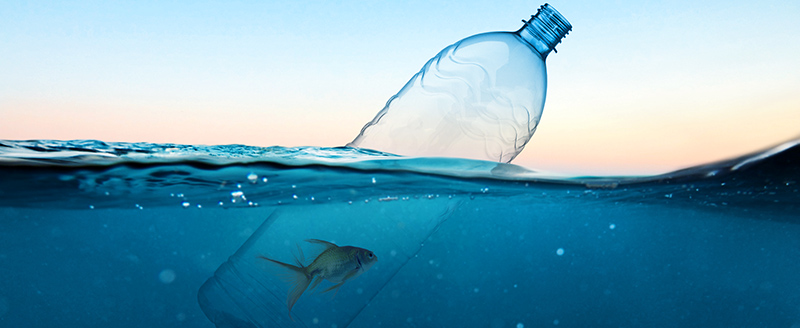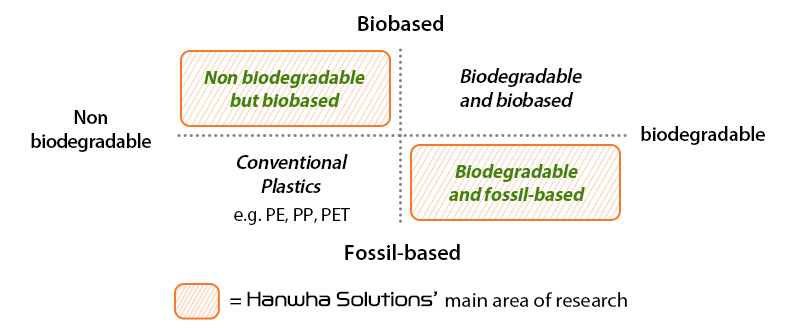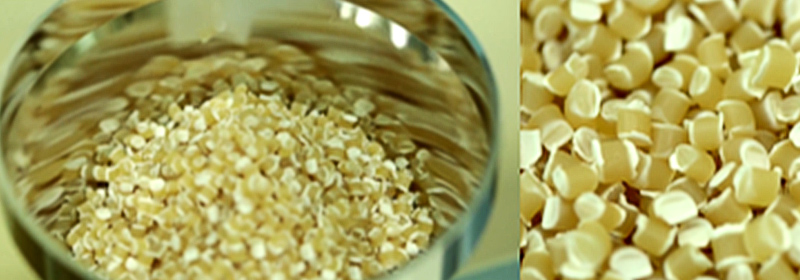Transforming Plastics to Protect the Environment : Hanwha Solutions Developing Eco-Friendly Bioplastics
It’s in your phone. It’s in your office chair. It’s in your computer. And it’s in some of your clothes. It’s plastic – the durable and affordable material for countless applications. There is little in the world that doesn’t contain it.
Unfortunately, plastics are also a major source of global pollution. According to the UN Environment Programme, more than 300 million metric tons of waste plastics are discarded each year, contaminating our soil and clogging our marine ecosystems. This problem won’t fix itself.

Plastics are a major source of global pollution, clogging our marine ecosystems.
Governments and NGOs around the world are looking for solutions to address this serious issue. But what about the companies in the private sector? What are their roles? In Korea, Hanwha Solutions’ Chemical Division (formerly known as Hanwha Chemical) is collaborating with top academic institutes like Yonsei University and Korea Advanced Institute of Science and Technology (KAIST) to accelerate the development of alternative materials like bioplastics. These efforts are striking at the root of our plastics problem.
Researching safer alternatives

Hanwha Solutions is researching two broad categories of bioplastics: biodegradable and bio-based.
Biodegradable plastics maintain the mechanical properties of conventional plastics and can be processed the same way. Unlike conventional plastics, biodegradable plastics can be decomposed by microorganisms such as bacteria, algae, and fungi. This process can turn the materials into eco-friendly biomass within six months. This means biodegradable plastics can be disposed safely without any pollution concerns.
Bio-based plastics, meanwhile, are made entirely, or in part, from renewable organic sources such as plants, animals, and microorganisms. The use of natural materials means using bio-based plastics causes lower carbon emission levels than those of traditional plastics.
So, what is Hanwha Solutions doing to advance these plastic alternatives?
Developing further refinements
Hanwha Solutions’ work includes the development of biodegradable polyester polymers. These form the chemical structure of some bioplastics and can decompose harmlessly in both soil and seawater. Thorough eco-friendly decomposition is vital, as microplastic contamination in marine ecosystems becomes ever more widespread. This research will be invaluable in developing manufacturing methods that will make biodegradable plastics more affordable and durable.
Research is also underway to develop new bio-based plastic manufacturing methods that use both polymerized biomass-derived and petroleum-derived monomers, or the molecules that bind to form polymers.
In other words, progress is being made and the outlook is positive for bio-based plastic manufacturing.
Hanwha Solutions’ researchers are also developing ways to make conventional plastics safer for the environment. Normally, conventional plastics take decades, or maybe even longer, to decompose. They also break down into microplastic particles that contaminate soil and water systems and cause serious pollution problems.
To address this, Hanwha Solutions is researching how to make polyethylene (PE) — the most common conventional plastic in the world — biodegradable. It has already developed proprietary methods of inducing molecular weight reduction and microstructure decomposition in PE by placing it in aerobic composting conditions with microorganisms. This is a major step forward as PE is very durable and difficult to break down.

Biodegradable Polyethylene Composite
So, what’s next? When does the so-called rubber meet the proverbial road?
From the home to the factory: bioplastics’ applications
At present, Hanwha Solutions is focused on R&D and acquiring new technologies to make bioplastic production more economical. By 2021, the company plans to shift to commercializing bioplastics and encouraging widespread adoption. Bio-based plastics, for instance, have a wide range of applications, from textiles and packaging to plastic materials used in automotive and electronics manufacturing.
Biodegradable plastics are already being used to produce disposable bags, agricultural mulch films, and food containers. They are also vital to the development of biodegradable fishing gear such as lines, lures, and nets. This will be a game changer in the fishing industry, as any lost gear would break down safely in a matter of months rather than spending years floating in the ocean and entangling marine life.
With oceans providing over half of all breathable oxygen, food, medicine, climate regulation and economic growth, Hanwha Solutions’ efforts to reduce plastic pollution stand to benefit all of us in the long run.
Using bioplastics to preserve what’s most precious
Through its continuing collaborations with Korea’s leading universities and in-house research and development, Hanwha Solutions is pushing the boundary of what’s possible in material science. With this research, the company is working toward becoming a world leader in innovating and commercializing eco-friendly materials for daily life and industrial applications.
As the world becomes more aware of the need to replace conventional plastics, Hanwha Solutions aspires to deliver pioneering materials that are high-quality and sustainable. To this end, it is proactively searching for viable alternatives in bioplastics and developing methods to minimize the adverse effects of conventional plastics and preserve the Earth’s precious ecosystems.
Get the latest news about Hanwha, right in your inbox.
Fields marked with * are mandatory.
- Non-employee
- Employee




